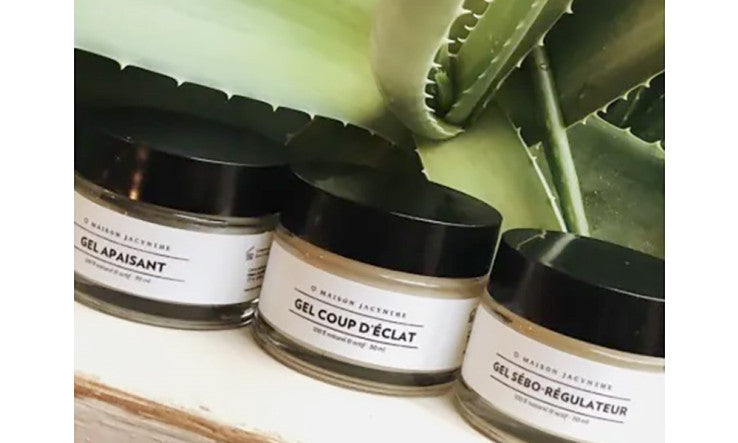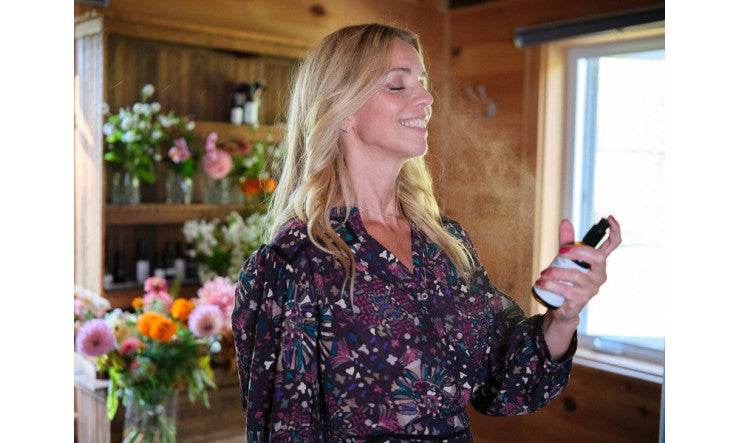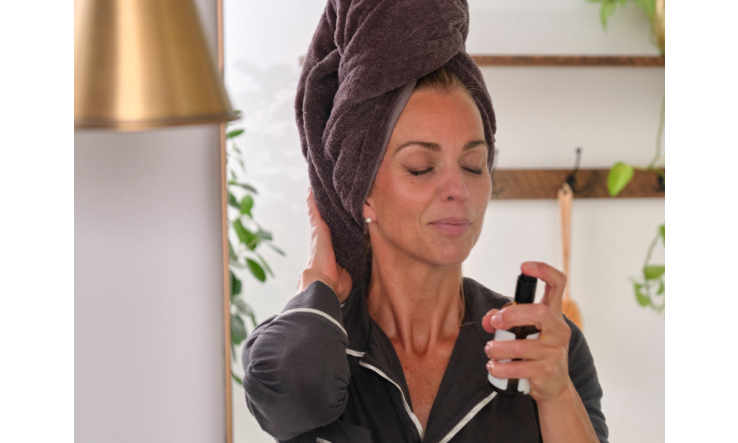His story
Native to South Africa, aloe is cultivated all over the world, notably in Spain, Mexico and also in the southern United States.
There are more than 300 varieties of aloe, but it is particularly the gel of aloe vera (aloe Barbadensis) which is the most used because its softening properties are highly valued both internally and externally and have been for a long time, since Hippocrates, a precursor of medicine, recognized its multiple qualities.
For over 5,000 years, all major civilizations have used aloe for therapeutic and cosmetic purposes. Its 150 scientifically recognized active ingredients make aloe vera an exceptional beauty/health supplement.
Aloe vera was considered a god in some civilizations. In ancient Egypt, Aloe was the plant whose "blood" gave beauty, health, and eternity. It accompanied Pharaoh on his journey to the other world.
· In Africa, nomadic camel drivers call it the “desert lily”, Americans “the silent healer”, and Russians “the elixir of long life”.
· Aristotle persuaded Alexander the Great to conquer the island of Socotra to obtain enough aloe to heal the soldiers' wounds.
The Hebrews considered aloe juice to be divine medicine and according to the Bible, aloe was supposed to have been planted by the Lord himself (Numbers 24:6).
Its cosmetic virtues were also recognized by Cleopatra, who did not deprive herself of the exceptional properties of this plant to perfect her legendary beauty, just like Nefertiti.
The Mayans called this plant “the fountain of youth” and the “source of youth.”
· In the United States, Japan, Russia, and China, aloe has tens of millions of often enthusiastic followers and there are countless publications about it.
The reputation acquired by aloe on five continents does not seem to be usurped.
Its composition
Enclosed in a triple plant protection, one can find the desired plant frost. The quality of this frost depends largely on the soil and climatic conditions of the growing area.
· Rich in vitamins: A, B1, B3, B6, B12, C, E and choline.
· Minerals: iron, calcium, zinc, potassium, magnesium, copper etc.
· 18 amino acids including 9 of the most important.
· Enzymes: acid phosphatase amylase, bradykinase, cellulase, lipase etc…
· Natural agents such as saponins which have antiseptic properties and anthraquinones which have antibiotic, antiviral and anti-inflammatory effects.
Its health benefits
We like to use it to treat various ailments (e.g., ...) because it stimulates the immune system, heals, and also acts as an antibiotic and anti-inflammatory. It has now been proven that the gel cures many minor everyday ailments of domestic life such as insect bites, burns, cuts, but also itching, digestive problems, stretch marks, eczema. For a long time, some athletes have used it to prevent and treat sprains, strains, tendonitis, and other injuries.
We appreciate having this plant in our homes because it is also one of the depolluting plants that absorb formaldehydes hidden, among other things, in the paints used indoors.
Its cosmetic virtues
Skin care
The fact remains that in all the countries and civilizations that have known aloe, we find indisputable traces of its use to treat skin and hair.
These days, a considerable number of beauty product manufacturers are quick to indicate on their labels that their product contains aloe. However, be careful: all that glitters is not gold. Look for products that contain a minimum of 70% aloe vera.
Here are 6 good reasons to use aloe to care for the appearance of your skin:
Aloe vera regulates the skin's pH
The normal pH of the skin is around 5, which is slightly acidic. This slight acidity of the skin allows it to better resist the various microorganisms that seek to "take up residence" there.
Aloe vera is a wonderful tool for balancing or maintaining the skin's pH. This is because its pH is quite similar to that of the skin.
Many beauty products are often too alkaline and don't match your skin's pH. However, you can't go wrong with aloe vera. Its regulating effects and non-toxicity make it a universal cosmetic agent. Aloe vera softens, refines, or firms facial skin, depending on the case. It restores skin tone.
Aloe vera penetrates deep into the skin
When combined with other elements like vitamin E, it helps them cross the epidermis to nourish the dermis and hypodermis or activate blood microcirculation. Studies led by Dr. Ivan E. Danhof, president of North Texas Research Laboratories, have even observed that aloe vera penetrates the skin four times faster than water.
Aloe vera nourishes the skin
With its array of vitamins, amino acids, and various substances, aloe vera nourishes the deep layers of the skin. Combining aloe vera with clay masks makes the effect even more powerful.
Aloe vera rids the skin of dead cells
Through the action of its proteolytic enzymes, aloe vera eliminates dead cells. Proteolytic enzymes are enzymes that hydrolyze proteins, that is, they break them down by binding water.
The epidermis is not supplied with microcirculation of blood like the dermis and hypodermis. When the passage between the dermis and epidermis is not congested, the dermis can properly nourish the epidermis. This allows new cells to form. If dead cells are not removed, they accumulate until they completely clog the skin pores.
Aloe Vera, a cell regenerator
Aloe vera not only makes room for new cells, but it ensures their full growth and accelerates it thanks to all the many nutrients it contains.
The great miracle of aloe vera is that it can stimulate cell proliferation. Dr. Danhof's studies also reveal that the gel can increase the production of fibroblast cells in humans six to eight times faster than normal cell reproduction. Fibroblast cells are cells specific to the connective tissue that forms the dermis of the skin. These cells are responsible for the production of collagen, a protein that is a component of the fundamental intercellular substance of the skin.
Dr. Danhof discovered that aloe not only improves fibroblast cell cohesion, but also accelerates collagen production. Polysaccharides, carbohydrates found in aloe, may explain its anti-aging ability. According to Dr. Danhof, polysaccharides reorganize epidermal cells located in the upper layer of the stratum corneum, which protects the skin from the external environment.
By firming the epidermis, aloe vera has a dual effect. On the one hand, the complexion rejuvenates; on the other, the skin is once again protected against harmful external agents and reacts better to the sun's rays.
Aloe vera is both a moisturizing and astringent agent
To stay healthy, skin must have sufficient water content, regardless of whether it is dry, oily or greasy.
Aloe vera hydrates the skin thanks to its considerable water content (99%), but it can also retain skin moisture. Due to its tissue-tightening properties, aloe vera is also an astringent. This is explained in part by the fact that it contains mono- and polysaccharides as well as several amino acids.
Aloe vera has the immense advantage of being able to act as both an occlusive and humectant. To better imagine what happens when you apply it, consider that aloe is a desert plant that not only needs to conserve the water it already contains, but also strives to capture as much ambient moisture as possible during the night.
Here are common skin problems that aloe vera can treat:
The versatility of aloe vera allows it to act on all skin types; when applied directly to the skin, it can improve a multitude of problems: acne, blackheads, redness, dry skin, "lizard skin", cellulite, stretch marks, scars, birthmarks or age spots.
Acne
The effects of aloe vera on acne and related skin problems have been the subject of several studies. Dermatology journals regularly publish articles on the subject. In their classic 1973 study, Egyptian researchers El Zawahry, Hegazy, and Hetal tested aloe on women between the ages of 18 and 25 suffering from mixed acne vulgaris (comedones, pustules, cysts, nodules). By the end of a one-month treatment, two of them had completely normal skin, and in the case of the third, the skin had improved significantly, with only minimal traces of acne remaining.
Cellulite
Nathalie improves the appearance of cellulite by applying generous amounts of an aloe-based product to the affected areas, which she then covers with a cellulose film (particularly to accelerate lymphatic or blood circulation). These preparations contain essential oils of juniper, cypress, cedar, grapefruit, cinnamon, ylang-ylang, and black pepper, which are extraordinary essential oils.
The aloe we chose for our treatments, although more expensive, comes from fresh juice and not from aloe reduced to powder then rehydrated, to retain the active ingredients of the aloe.
It is found in these products:
Pure Aloe Vera Gel - softens, refines or firms facial skin as needed and restores skin tone.
Radiance Boost Gel - Suitable for most skin conditions to provide daily hydration and soothe minor irritations. For an instant radiance boost!
Sebum-regulating gel - helps eliminate excess sebum and balance sebaceous gland function. A top-rated pimple clearer, reviews abound!
Soothing gel - gentle and calming that restores the most reactive and sensitive skin (intolerant to cosmetic products). Excellent for accelerating the healing of pimply skin.
Tranquility Gel – for gardening without being disturbed, it’s perfect for moisturizing the skin and keeping unwanted visitors away on those beautiful summer evenings!
Sacred Lotus (Hydration Booster - Hyaluronic Acid) - Skin is deeply hydrated, energized, and more toned. Use as a "care base" just after floral water and before serum.
Firming Fluid - For all skin types, even sensitive skin, that want an invigorating, hydrating, anti-aging boost! Provides an immediate firming effect!
Spicy Choco & Coffee Fluid - warm and spicy silhouette melt. Concentrated and flavored, active on unsightly dimples. A warming sensation that envelops the body, activates deep circulation and restores tone to the blood vessels.
Phytobaume Été - offers dual performance in maintaining hydration and repairing sensitive skin. This fluid helps restore the epidermis's water balance and assists it against external aggressions.
Phytobaume Hiver - Divine Emulsion, a quintessence, the perfect blend of oil, butter and gels. This fluid helps restore the epidermis's water balance and assists it against external aggressions during the cold season.
Note: Aloe is part of the lily family, like onions, garlic, asparagus or leeks, people allergic to these foods may be allergic to aloe. It is suggested to do the test on the crease of the elbow and wait 24 hours to see if there is an allergic reaction or not.
Sources of inspired text:
https://www.guide-phytosante.org
https://www.consoglobe.com/sante-aloe-vera-medecine-miracle-3069-cg/2
https://jardinage.lemonde.fr/dossier-684-aloe-vera-vertus-cosmetiques-aloes.html
Additional information:
To learn more about the various clinical studies on the properties of aloe
What are the benefits of aloe juice?
Maison Jacynthe disclaims all liability. All information contained on this page is not intended to replace justified allopathic treatment or to disregard the expertise of the medical profession. It is up to each individual to take charge of their own health, to inform themselves, and to make the necessary changes to improve their condition. Therapeutic supervision by a qualified health professional is obviously recommended.


































































comment
J’apprécie les informations sur l’aloès. Cela me permet de comprendre les effets des différentes sortes sur la peau.
Merci! Maison Jacinthe
Leave a comment